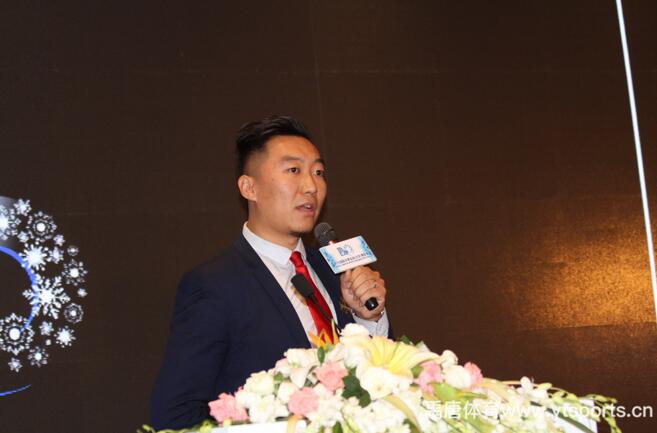On October 20th, the 2016 World Winter Sports (Beijing) Expo (WWSE) - "Internet Plus Sports Marketing" Forum was held at the Beijing International Convention Center. The forum was hosted by Beijing Olympic City Development Association in association with International Data Group (IDG) and was co-organized by Yutang Sports.
After Mr Piao from the 2022 Beijing Winter Olympic Games and other guests’ speech, the CEO assistant of Beijing Kunlun Red Star Hockey Club, Mr Ding Ran, shared with the audiences the club’s general operation and problems in this market. Below are some of his words.
Beijing Kunlun Red Star (BKRS) Hockey Club is the only team in China which has participated in the KHL and is a most competitive team who are very highly regarded by audiences. The club has its own original constitution with a strong background in China and Russia, including One Belt and One Road, mentioned by Xi jinping.
In fact, all competitive sports clubs and professional sports are faced with an important problem: how to convert the existing operational model of clubs into profits and other business value.
The big weakness of ice hockey in China is that it has a weak base and is not popular with the Chinese audience, which inhibits its development.
We operate this club just like making a model of a pyramid. We now have all the systems in place because we have an excellent ice hockey club, relatively stable support from the government and open attitudes towards cooperation & investment.
However, its base needs to be improved. We want to form a complete ice hockey industry chain like a pyramid system, through strategic cooperation and integrated resources.
In future, we will cooperate with ice hockey at the grass-roots level and with ice hockey clubs which can facilitate the masses. We can offer channels for them to provide talents to professional teams and even the national team for the 2022 Olympic Winter Games.
Ice hockey is not widely popular among the sports fraternity in China and its market is small. We want to seek help from the recreation industry, entrepreneurs and well-known institutions with large audiences. Our future strategy and our biggest challenge is to get fans interested in a sport which is unfamiliar to them.
Proofread by Sean O Diobhilin
